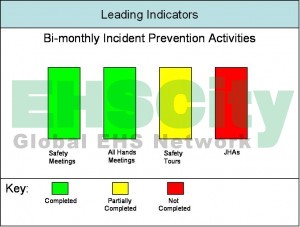The question now becomes - what do we do with that data? How can we track our performance of all these metrics? How can we take action on the sustainability metrics we've worked so hard to gather?
Using Environmental Health and Safety Management Systems, you have the ability to make sense of the data, organize it into a logical group, and take specific actions to correct and improve sustainability performance. Let's look at some of the areas where EHS systems can provide a platform for sustainability excellence:
Tracking Aspects and Targets: A critical part of sustainability management is outlining all the environmental aspects your company has to to track. EHS systems provide the platform for identifying the various aspects and tying them to specific areas within your organization. Using a hierarchical structure, you can identify the aspect, the units of measure and what your target goals are.
Sustainability Performance Management: Keeping record of the aspects and targets will give you the roadmap of where you want to be with respect to your sustainability initiatives. The next important step is how you organize the data that comes in from the various environmental controls. EHS is a prime platform to collect and analyze this data. Using EHS Sustainability Performance Management, you can input all the data around your sustainability initiatives, compare them to the targets you've set and uncover the various trends centered around sustainability.
Taking Action: Here's where the EHS system proves the most benefit to sustainability. Uncovering the visibility into sustainability performance will ultimately drive decision-making and the need to correct environmental events within your system. This is where the workflow behind EHS systems come into play. Using best practices and intelligent rules-based workflow, EHS systems can take action on sustainability events through processes such as:
Corrective Action: if there is an environmental event, the most important catalyst for change is the Corrective Action (CAPA). CAPAs enable the organization to systematically investigate, correct and verify the effectiveness of environmental impacts.
Change Management: Another important factor is the management of change within the organization. As you take steps to improve your ecological impact on the world, having a dedicated change management system can help to drive the deliverable to execute on that change. EHS systems provide the core functionality and workflow to not only make sure that change is executed within the company, but also that it is executed on time and within the specified parameters.
This is just a simple, quick look at the concept of EHS systems interconnecting with sustainability management in an organization. EHS provides the platform and functionality to not only set the targets and record the data, but also to provide trending and analysis and foster organization and ecological change within the business.

